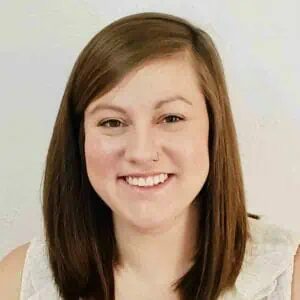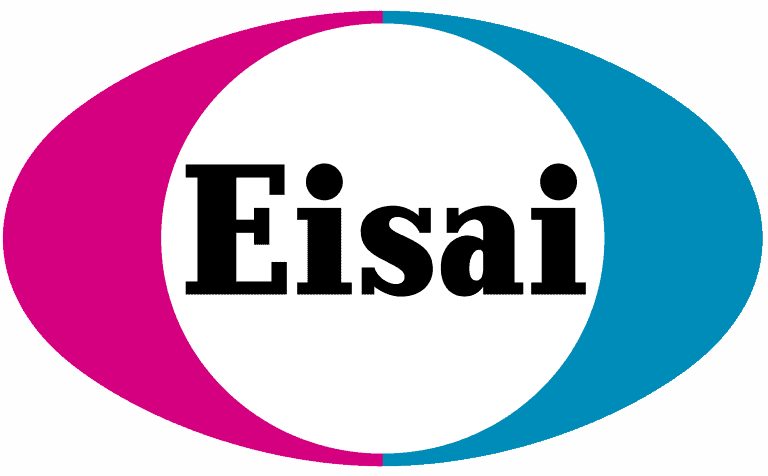At last night’s 15th Annual DSF Research Roundtable, we announced the 2024 Grant Awardees. DSF is proud to be awarding a total of $1.4M to five research grants, bringing the total amount DSF has directed to research to over $10.5M since funding our first grant in 2010. This year’s funding focuses on several promising approaches to addressing the underlying cause of Dravet syndrome, which is reflective of the immense amount of progress that has occurred as a whole in the field of Dravet syndrome research. While there is still more to be studied about the basic biological processes that lead to and are impacted by the genetic mutations that cause Dravet syndrome, a strong scientific groundwork exists to test new therapies in animal and cell models that closely mimic many aspects of Dravet syndrome. Read on to learn more about these exciting projects.
DSF awarded $500,000 each to two Transformational Science Grants this year. A new grant category added in 2023, DSF Transformational Science Grants are intended for advanced projects that have the potential to significantly impact the research field and/or to move the needle on clinical care. The two Transformational Science Grants outlined below both focus on unique approaches to treating the genetic underpinnings of Dravet syndrome while adding considerable knowledge to the understanding of how, where, and when genetic interventions may be beneficial.
Circuit-selective Whole SCN1A Gene Delivery for Dravet Syndrome
- Boaz P. Levi, PhD– Allen Institute for Brain Science
- Bryan B. Gore, PhD- Allen Institute for Brain Science
- John K. Mich, PhD- Allen Institute for Brain Science
- Tim Jarsky, PhD- Allen Institute for Brain Science
Transformational Science Grant- $500,000 over 3 years
This grant funded with support from Marlins for Mason
Summary from the Research Team: Dravet syndrome is a severe early infantile epilepsy with no approved disease-modifying therapy, and new therapeutics are urgently needed. In this project, we will test a new therapeutic strategy to deliver to certain brain cells SCN1A, the dysfunctional gene in Dravet syndrome. Whole SCN1A gene delivery has an advantage over the strategies currently being tested in the clinic that increase both the normal and mutant copy of the gene. We will use this grant to 1) measure how Dravet neurons change their gene expression and firing in response to whole SCN1A gene therapy using a new technique called Patch-seq, and 2) we will characterize the effectiveness and safety of whole SCN1A gene delivery in a preclinical mouse model of Dravet syndrome with a missense mutation, a common variant type seen in the human patient population. These studies will pave the way for future therapeutic development.
Molecular characterization of the therapeutic effect of exogenous NaV1.1
- Eric J. Kremer, PhD– Institut de Génétique Moléculaire de Montpellier
- Moran Rubinstein, PhD– Tel Aviv University
- Else A. Tolner, PhD– Leiden University Medical Center
- Ethan M. Goldberg, MD, PhD– The Children’s Hospital of Philadelphia
Transformational Science Grant- $500,000 over 3 years
This grant funded with support by Dance for Dravet
Summary from the Research Team: The original notion of “gene therapy” was to replace a defective gene with a functional copy. Although conceptually simple and straightforward for some organs, diseases of the brain, especially those that impact neurodevelopment, create additional challenges. Indeed, neurons are the most structurally diverse and specialized cell type in the body with numerous functionalities, which creates therapeutic challenges.
We developed a gene transfer approach in DS mice that, to date, is one of the most effective. However, our approach did not follow the dogma that only some neuron types (inhibitory, not excitatory) should be targeted. We now want to explore the “How? and Why?”. What did our therapy change in the mouse brain? Has our therapy affected the gene being activated throughout the neuronal networks? How does exogenous NaV1.1 activity affect the function of neurons? How long do we need to provide exogenous NaV1.1 activity to prevent the inception and maintenance of the disease state? Can our results provide fundamental and mechanistic insight to allow alternative approaches and outside the box thinking?
Equally important, we corrected many of the most life-threatening and debilitating symptoms, including seizures, sudden death, and cognitive function. Here, we will further determine if our approach corrected more subtle comorbidities, including sleep deficits. The restoration of the latter would strongly contribute to improving the lives of patients with DS. These are among the ambitious goals of our research proposal.
DSF chose to award a Research Grant in the amount of $250,000 distributed over 2 years to a collaborative research project investigating the use of a technology called base editing which is a newer application of CRISPR technology that allows for correction of mutations that change a single letter in the DNA code.
Base editing for the treatment and prevention of Dravet syndrome
- Ethan M. Goldberg, MD, PhD– The Children’s Hospital of Philadelphia
- David R. Liu, PhD– MIT and Harvard University
Research Grant- $250,000 over 2 years
Summary from the Research Team: Dravet syndrome is caused by genetic mutations in the gene SCN1A that encodes the voltage-gated sodium channel subunit known as Nav1.1, which is important for the electrical activity of seizure-suppressing neurons in the brain known as parvalbumin-expressing fast-spiking interneurons. Approximately 40% of the causative mutations are single base pair mutations that lead to a complete loss of Nav1.1 protein. Correction of this single base pair mutation could represent an entirely new treatment or preventative therapy. Base editing offers the promise of such a solution, a technique that uses the Nobel Prize-winning method of CRISPR/Cas9 gene editing to correct single base pair mutations without off-target (so-called “bystander”) effects that so far have previously raised concerns with the application of CRISPR/Cas9 technology to the treatment of human disease. Base editing has already shown efficacy for treatment/prevention of a range of diseases in preclinical mouse models. Here, a highly innovative world leader in the development of base editing (Dr. David Liu at Harvard University/Broad Institute) and a domain expert in Dravet syndrome (Dr. Ethan Goldberg at The Children’s Hospital of Philadelphia) team up to attempt to develop and apply a base editing strategy for Dravet syndrome in a validated mouse model. The applicants will refine a base editing approach for Dravet syndrome and then test its ability to prevent febrile seizures, epilepsy, and mortality in experimental mice, and to reverse the abnormalities seen in parvalbumin-expressing interneurons. This work would provide important data to support the further development of such an approach for potential future application in human patients, which could be truly transformative for patients and their families struggling with what is an incurable and largely untreatable disorder that affects 1 in 14,000 children born in the U.S. and around the World.
DSF recognizes the importance of investing in early career scientists and encouraging their research to focus on Dravet syndrome. With the addition of two exceptional awardees in 2024, DSF has now funded 18 postdoctoral fellows with an investment of over $1M.
Selective Activation of Hippocampal Parvalbumin Interneurons via Focused Ultrasound Neuromodulation for Seizure Suppression in Scn1a+/- Mice
Xu Zhang, PhD– Boston Children’s Hospital and Harvard Medical School
Postdoctoral Fellowship- $75,000 over 1 year
Elliot Meskis Award Recipient- $2,500 Supplement for Professional Development
Summary from the Researcher: Dravet syndrome (DS) is a severe, early-onset genetic epilepsy caused by a mutation in the SCN1A gene, resulting in reduced activity of specific inhibitory neurons in the brain. This disruption leads to abnormal brain activity and frequent seizures, while current treatments are often ineffective, making DS a challenging condition to manage. Our research explores a novel approach using focused ultrasound stimulation (FUS), a noninvasive technique that can precisely target and modulate brain activity. In previous studies, we demonstrated that FUS, when applied under specific conditions, can selectively activate these crucial inhibitory neurons. In this project, we aim to optimize FUS parameters to restore normal neuronal activity in a mouse model of DS and test its ability to acutely suppress ongoing seizures. By establishing FUS as a potential therapeutic tool, this work seeks to offer a new, effective treatment option for DS patients.
Multi-Target Strategy for Dravet Syndrome: Enhancing Sodium Channels and GABA Receptors via miRNA Inhibition
Petra Bencurova, PhD– Royal College of Surgeons in Ireland
PostdoctoralFellowship- $75,000 over 1 year
This fellowship was supported by Budgetdog, LLC
Summary from the Researcher: Dravet Syndrome (DS) is a rare and severe form of epilepsy in children that causes a variety of issues including sudden unexplained death in epilepsy. DS is caused mainly by errors (mutations) in gene SCN1A encoding sodium ion channel – a specialized protein that allows the flow of ions in and out of cells. Currently, there is no cure for DS, and therapies in development focus on correcting errors in SCN1A or increasing its activity. However, other ion channels also play a role in DS, and targeting these alongside SCN1A could help, especially in patients who don’t respond to SCN1A-based treatments. In this project, I aim to explore a new treatment approach for DS by focusing on small molecules called microRNAs (miRNAs). miRNAs can turn genes on or off and regulate multiple genes at once. My previous research has shown that blocking certain miRNAs can increase the activity of SCN1A and other useful genes that could reduce brain excitability in DS. This project will investigate how specific miRNAs influence ion channels, with the goal of developing a novel treatment approach that can relieve symptoms in DS patients.





